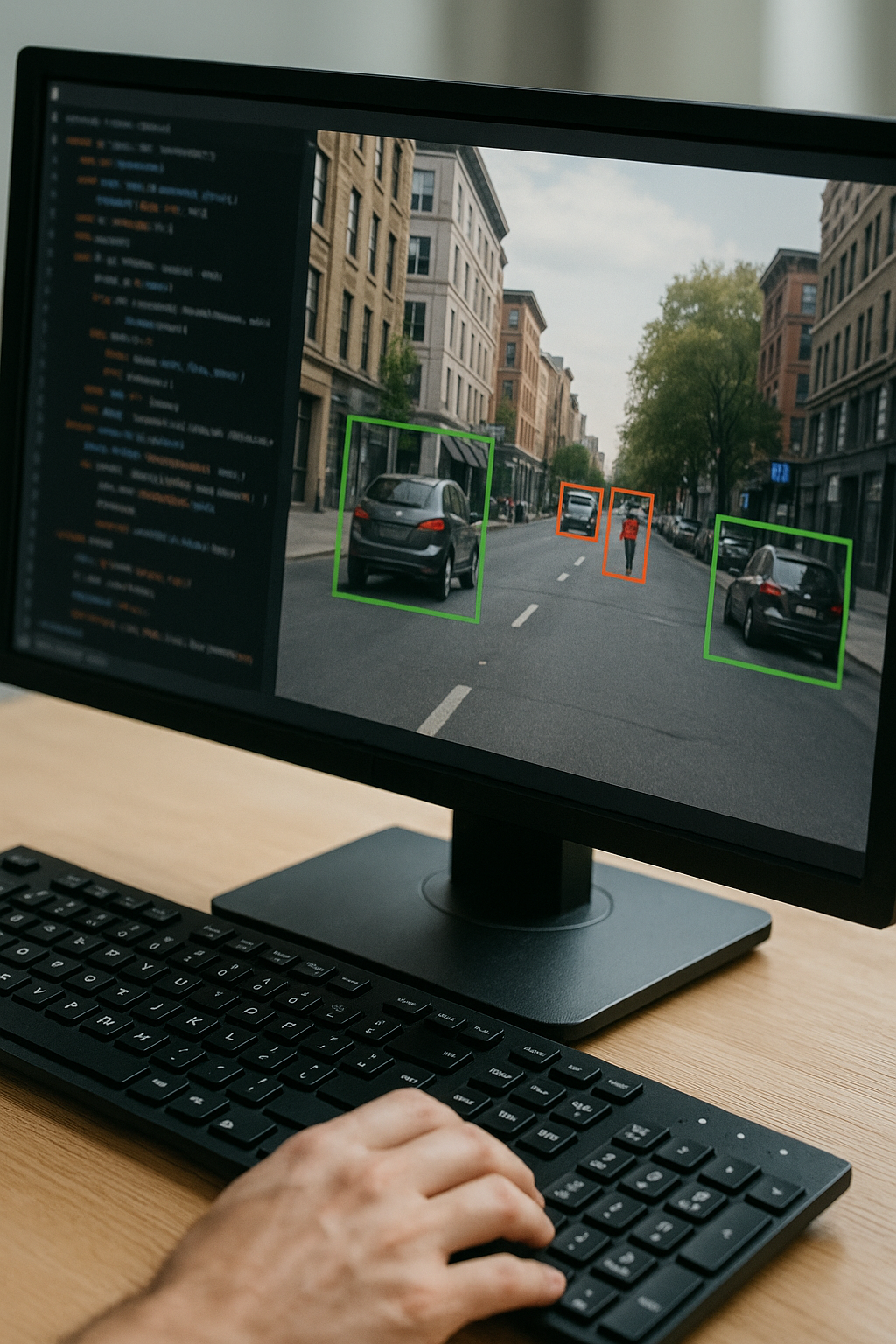AI and Privacy: Navigating the Data Protection Challenge
Artificial intelligence has become integral to modern life, powering everything from personalized recommendations to predictive healthcare diagnostics. Yet, its reliance on vast data sets can clash with individual privacy rights. In this blog post, we delve deeply into the complex intersection of AI and privacy. We will discuss legal frameworks, technical strategies, ethical considerations, organizational governance, and future trends that are shaping how data protection evolves alongside AI innovations.
AI’s Dependence on Data: Scope and Risks
At its core, AI thrives on data. Supervised machine learning models, in particular, require labeled data to learn patterns, while unsupervised algorithms analyze unlabeled data to uncover hidden structures. Whether it’s consumer behavior data used for targeted advertising or genomic data utilized in precision medicine, AI’s efficacy often scales with data volume and diversity. However, this dependence introduces several risks:
- Data Breaches and Unauthorized Access: Centralized databases storing personal information can become prime targets for cyberattacks. A breach not only exposes sensitive user details but can also erode public trust in AI-driven services.
- Persistent Data Retention: Some AI applications store historical user data indefinitely for retraining or auditing. If not managed properly, this can conflict with data minimization principles and increase the window of vulnerability.
- Re-Identification Threats: Even when datasets are anonymized, attackers can cross-reference multiple sources to re-identify individuals—especially in small or unique populations.
- Profiling and Discrimination: AI-driven profiling can lead to unfair treatment. For instance, algorithms used in credit scoring or insurance underwriting might inadvertently discriminate against marginalized groups if the training data reflects historical biases.
Navigating these risks requires a comprehensive approach—one that combines legal compliance, advanced technical controls, and ethical oversight.
Legal Frameworks: Global Data Protection Laws
GDPR: The Gold Standard
The European Union’s General Data Protection Regulation (GDPR) remains the most influential data protection law worldwide. GDPR’s core principles relevant to AI include:
- Lawfulness, Fairness, and Transparency: Organizations must process personal data in a transparent manner, informing individuals about data collection, storage, and usage.
- Purpose Limitation and Data Minimization: Data should be collected for explicit, legitimate purposes and be limited to what is necessary. For AI, this means avoiding “just-in-case” data hoarding.
- Accuracy and Storage Limitation: Personal data must be accurate and kept only as long as needed for its original purpose.
- Integrity and Confidentiality: Organizations must implement appropriate security measures—encryption, pseudonymization, and access controls—to protect data.
- Data Subject Rights: Individuals have the right to access their data, rectify mistakes, erase data (“right to be forgotten”), and object to certain processing activities.
GDPR also introduces specific obligations for AI:
- Data Protection Impact Assessments (DPIAs): When implementing high-risk AI systems (e.g., facial recognition, health diagnostics), organizations must perform DPIAs to evaluate potential privacy impacts and mitigation strategies.
- Automated Decision-Making: If an AI model makes decisions that significantly affect individuals (like loan applications), organizations must provide meaningful information about the logic involved and allow users to contest decisions.
U.S. State and Federal Regulations
In the United States, data protection follows a sectoral, state-based model. Key regulations include:
- California Consumer Privacy Act (CCPA): Grants California residents rights to know what personal data is being collected and to request deletion. While CCPA focuses primarily on consumer data, its principles influence other state-level laws.
- Virginia’s Consumer Data Protection Act (VCDPA) and Colorado Privacy Act (CPA): Expand consumer rights similar to CCPA, including opt-out of certain data usage and data portability.
- Health Insurance Portability and Accountability Act (HIPAA): Regulates protected health information (PHI). AI used in healthcare must comply with HIPAA’s security and privacy rules.
- Children’s Online Privacy Protection Act (COPPA): Restricts the collection of data for users under 13, affecting AI applications oriented toward children.
Asia-Pacific and Other Jurisdictions
- China’s Personal Information Protection Law (PIPL): Introduces stringent requirements for consent, cross-border data transfers, and defines “sensitive personal information.” AI companies operating in China must employ robust controls.
- Japan’s Act on the Protection of Personal Information (APPI): Focuses on data minimization and anonymization, with revisions to keep pace with AI technologies.
- Brazil’s General Data Protection Law (LGPD): Mirrors many GDPR principles, requiring impact assessments and user consent for processing sensitive data.
Given this mosaic of regulations, global organizations must adopt a harmonized privacy-by-design approach that can be tailored to regional requirements.

Technical Strategies to Safeguard Privacy in AI
AI developers have a suite of techniques to minimize privacy risks at various stages—collection, processing, and storage.
Anonymization and Pseudonymization
- Anonymization: Irreversibly removing personally identifiable information (PII) from datasets. While true anonymization is difficult—since attacker models may cross-reference multiple sources—good practice involves removing or generalizing quasi-identifiers (e.g., ZIP codes, birth dates).
- Pseudonymization: Replacing direct identifiers (names, Social Security numbers) with pseudonyms or tokens. This adds a layer of separation but requires secure mapping tables that link pseudonyms back to identities if needed.
Implementation Considerations:
- Use k-anonymity, l-diversity, or t-closeness frameworks to measure and ensure the robustness of anonymization.
- Regularly audit de-identification processes, especially when new data sources are merged.
Differential Privacy
Differential privacy ensures that the output of a query on a dataset does not reveal whether any particular individual’s data was included. This is achieved by adding carefully calibrated noise to statistical results or model gradients.
- Epsilon (ε) Budget: Defines the privacy guarantee. Smaller ε means stronger privacy but lower data utility. Developers must balance privacy loss and model performance.
- Applications: Companies like Apple and Google have deployed differential privacy in product analytics to understand usage patterns without compromising individual user data.
Implementation Considerations:
- Define clear use cases where aggregate insights are sufficient, rather than precise individual-level data.
- Establish a privacy budget and track its consumption over multiple queries.
Federated Learning and Edge AI
Federated learning trains a global AI model across multiple decentralized devices or servers holding local data samples—without exchanging the raw data itself.
- Workflow: 1. A global model is sent to user devices; 2. Devices train the model locally on their data; 3. Only model updates (gradients) are sent back to the central server; 4. The central server aggregates updates to improve the global model.
- Benefits: User data never leaves the device; network bandwidth is used more efficiently when compared to uploading entire datasets.
- Challenges: Ensuring update authenticity, handling heterogeneous data distributions, and preventing model inversion attacks that might reconstruct training data from gradients.
Implementation Considerations:
- Use secure aggregation protocols to prevent the server from viewing individual model updates.
- Combine federated learning with differential privacy to add noise to model updates for additional protection.
Homomorphic Encryption and Secure Multi-Party Computation (SMPC)
- Homomorphic Encryption: Allows computations to be performed on encrypted data without needing decryption. The results, when decrypted, match the outcome as if the operations were performed on plaintext.
- SMPC: Enables multiple parties to jointly compute a function over their inputs while keeping those inputs private. Each party sees only its own data and the final output.
Implementation Considerations:
- Homomorphic encryption schemes (e.g., BFV, CKKS) can be computationally intensive—best suited for specialized use cases like confidential medical data analysis.
- SMPC protocols (e.g., Yao’s Garbled Circuits, Shamir’s Secret Sharing) require careful coordination but excel in collaborative scenarios where no single party should access all data.
Ethical Considerations: Beyond Compliance
Legal compliance is a starting point—but ethical AI demands that organizations proactively embed fairness, accountability, and transparency throughout the AI lifecycle.
Explainable AI (XAI)
Complex AI models, especially deep neural networks, often function as “black boxes.” Explainable AI techniques aim to make these models interpretable:
- Post-Hoc Interpretability: Tools like LIME or SHAP analyze a trained model’s behavior by approximating local decision boundaries or computing feature importance scores.
- Inherently Interpretable Models: Decision trees or linear models are more transparent by design, but may sacrifice accuracy compared to deep learning.
Implementation Considerations:
- Choose XAI tools that align with the organization’s use case—global explanations for model validation or local explanations for individual decision audits.
- Train end-users and stakeholders on interpreting XAI outputs to avoid misinterpretations.
Fairness and Bias Mitigation
Bias can manifest in training data, model architecture, or feedback loops. Ensuring fairness involves multiple steps:
- Diverse, Representative Data: Gather datasets that reflect the diversity of the target population.
- Bias Detection: Use statistical metrics (e.g., disparate impact ratio, equalized odds) to quantify bias across protected groups.
- Mitigation Techniques: Apply pre-processing methods (data reweighting), in-processing constraints (fairness-aware learning algorithms), or post-processing adjustments (calibration) to reduce bias.
Implementation Considerations:
- Continuously monitor model performance across demographic slices and iterate on mitigation as needed.
- Document fairness assessments, showing how bias metrics changed after each mitigation step.
Accountability and Auditability
Accountability frameworks ensure that when AI systems make errors or cause harm, there is a clear path to remediation:
- Model Documentation (Model Cards): Summaries that describe the intended use, performance metrics, dataset composition, and known limitations of AI models.
- Data Sheets for Datasets: Detailed records of dataset provenance, construction process, and potential biases.
- Audit Trails: Logs capturing training parameters, data versions, and decision-making checkpoints, enabling reproducibility and error analysis.
Implementation Considerations:
- Establish cross-functional teams (legal, data science, ethics) to review model documentation.
- Use version control and secure logging systems to maintain detailed audit trails.
Organizational Data Governance and Global Collaboration
Technical and ethical measures must be supported by strong organizational policies and international cooperation.
Building a Privacy-First Culture
- Roles and Responsibilities: Appoint a Chief Privacy Officer (CPO) and Data Protection Officers (DPOs) to oversee compliance, risk assessments, and user inquiries.
- Training and Awareness: Provide regular workshops for data scientists, engineers, and decision-makers on privacy principles, threat modeling, and incident response.
- Incident Response Plans: Define steps to follow in case of data breaches, including communication strategies and remedial actions.
Cross-Border Data Flow and Transfer Mechanisms
- Data Transfer Agreements: Use Standard Contractual Clauses (SCCs) or binding corporate rules (BCRs) to legitimize transfers between regions with different regulatory regimes.
- Data Localization Requirements: Some countries require data generated within their borders to remain local, affecting how AI services are deployed globally.
Public-Private Partnerships and Standardization
- Consortia and Alliances: Groups like the Partnership on AI, IEEE Global Initiative on Ethics of Autonomous and Intelligent Systems, and ISO/IEC committees work to develop global standards for ethical AI and data protection.
- Benchmarking and Shared Resources: Collaborative projects often create open-source tools, whitepapers, and best-practice guidelines to help organizations adapt to evolving regulations.
Emerging Challenges and Opportunities
As AI technologies advance, new privacy considerations arise:
- Biometric AI and Behavioral Profiling: Facial recognition, voiceprints, and gait analysis can uniquely identify individuals—but their accuracy and potential for misuse raise serious privacy concerns.
- Deepfake Detection and Countermeasures: As generative AI creates highly realistic synthetic content, tools for detecting manipulated media become vital to prevent misinformation.
- Quantum-Safe Encryption: Anticipating future quantum computing capabilities, organizations are beginning to explore encryption algorithms resistant to quantum attacks. This forward-looking approach is essential for safeguarding long-term data confidentiality.
On the opportunity side:
- Privacy-Preserving AI Services: Companies can differentiate themselves by offering AI solutions that guarantee strong data protection—catering to privacy-conscious users in healthcare, finance, and other sectors.
- RegTech and AI Compliance Tools: AI-driven tools that automate compliance checks, policy updates, and risk assessments will ease the burden on organizations navigating complex legal landscapes.
Conclusion
Balancing AI innovation with robust data protection is an ongoing journey that involves legal compliance, ethical design, technical safeguards, and strong governance. Organizations that embrace a “privacy-first” mentality will not only reduce risk but also build lasting trust with their users.
Want to stay ahead in AI ethics and data security? Subscribe to our newsletter for in-depth analyses, expert interviews, and practical guides—delivered directly to your inbox.
Sign Up For Our Weekly Newsletter and Get Your FREE Ebook " AI For Everyone - Learn the Basics and Embrace the Future"











